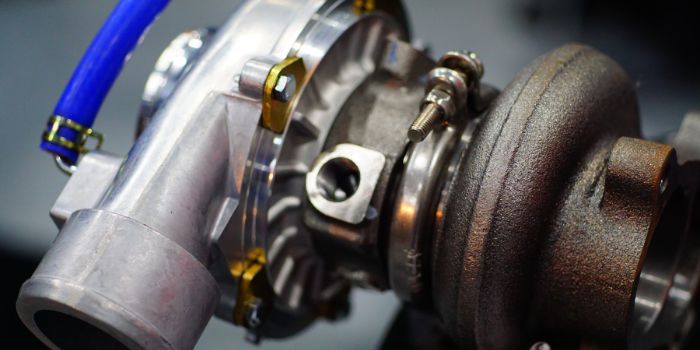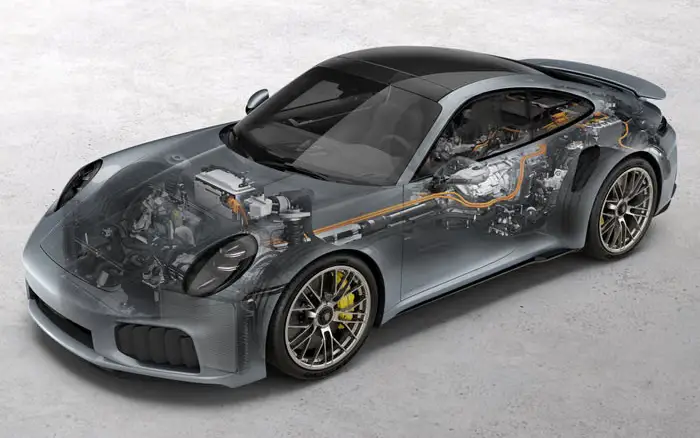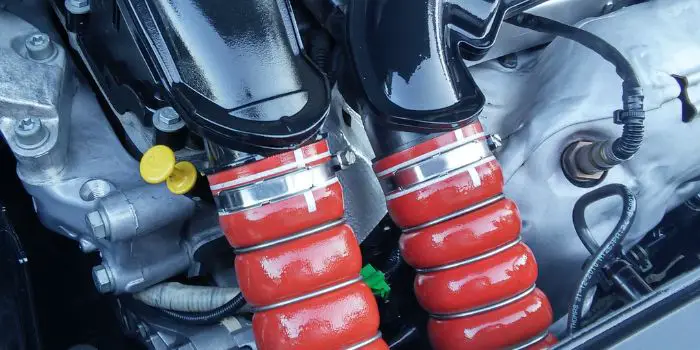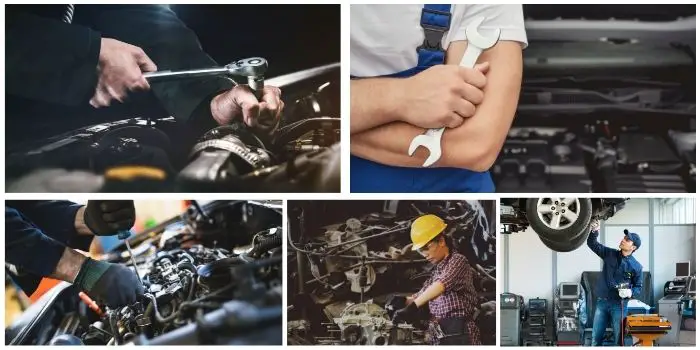
Turbocharged engines—love them or fear them, they’re the heartthrobs of the automotive world.
They promise a thrilling surge of power, that satisfying whoosh, and an extra kick that naturally aspirated engines can only dream of.
But with great boost comes great responsibility… and a fair share of quirks.
If you’ve ever wondered whether a turbo is your ticket to automotive bliss or a fast track to garage visits, buckle up.
We’re diving into the world of turbos—what makes them tick, what can make them tick off, and why owning one is both exhilarating and a tiny bit nerve-wracking.
What is a Turbocharged Engine?
At its core, a turbocharged engine is all about doing more with less—squeezing extra power from the same engine size.
Instead of relying solely on atmospheric pressure to push air into the engine, a turbocharger uses exhaust gases to spin a turbine.
This turbine, in turn, forces more air (and therefore more oxygen) into the combustion chamber.
The result is a much fiercer explosion in each cylinder and, naturally, more horsepower.
Think of it as giving your engine a caffeine shot. You’re still sipping the same cup of coffee, but suddenly, it’s turbo-charged and ready to zoom past the competition.
And yes, while the boost feels like pure magic behind the wheel, it comes with its own set of engineering challenges that can trip up even the most careful drivers.

How Reliable are Turbocharged Engines in Cars?
Turbocharged engines have a bit of a reputation: they’re thrilling, yes, but are they troublemakers?
The truth lies somewhere in between. Modern turbos are far more reliable than their early counterparts, thanks to advances in materials, cooling systems, and engineering precision.
With proper maintenance—think regular oil changes, high-quality oil, and gentle warm-up/cool-down routines—turbo engines can easily last as long as naturally aspirated engines.
That said, a turbo is still an extra component working under intense heat and pressure.
Neglect it, push it too hard, or skip maintenance, and problems like oil coking, worn bearings, or even a failed turbocharger can crop up.
Essentially, turbos reward respect: treat them well, and they’ll reward you with thrilling performance; abuse them, and they can become an expensive headache.
In short, reliability isn’t about the turbo itself—it’s about how you treat it.
A pampered turbo can run happily for hundreds of thousands of kilometers, while a neglected one will remind you why “boost” isn’t just about speed.
Common Issues Turbocharged Engines Face (Possible Fixes)
Turbo engines are incredible, but they’re not without quirks. Here are the most common issues you might encounter:
| Issue | What It Means | How to Spot It / Prevent It |
|---|---|---|
| Turbo Lag | Delay between pressing the accelerator and feeling the boost | Normal at low RPMs; avoid heavy throttle abuse and maintain proper oil levels |
| Oil Leaks / Oil Coking | Turbo bearings rely on clean, high-quality oil; old or dirty oil can cause deposits and leaks | Regular oil changes with recommended grade; allow turbo to idle before shutting off |
| Overheating / Thermal Stress | Turbos run extremely hot, which can damage components | Cool down engine after spirited driving; ensure proper cooling and oil circulation |
| Worn Bearings / Shaft Play | Turbo spinning at high speeds can wear bearings over time | Listen for whining or grinding noises; maintain oil quality |
| Boost Pressure Issues | Faulty wastegate, actuator, or leaks in hoses can reduce performance | Check for check-engine lights, reduced acceleration, or hissing sounds |
| Excessive Exhaust Smoke | Often caused by oil leaks into the combustion chamber | Regular maintenance and using correct oil viscosity can prevent this |
| Carbon Build-Up on Intake Valves | More common in direct-injection engines; affects airflow and performance | Occasional intake cleaning or walnut blasting can help |
While this may sound intimidating, most turbo problems are preventable with regular care.
Think of it like owning a sports car: exciting, rewarding, and yes, you do need to treat it like royalty.
What are the Different Types of Turbocharged Engines in Vehicles?
If you’ve ever felt that thrilling “whoosh” when you press the accelerator and your car suddenly comes alive, you’ve experienced the magic of a turbo.
But not all turbos are made the same—some are subtle and sneaky, while others are full-on thrill machines.
Let’s take a quick, friendly tour of the different turbo setups you might find under the hood.
1. Single Turbo
The classic one-turbo setup. Simple and reliable, it gives you a nice boost when you push the gas, though there can be a bit of lag at low speeds.
Think of it as a dependable friend—takes a minute to get going, but delivers big when it counts.
2. Twin-Turbo (Bi-Turbo)
Two turbos working together. One handles the low end while the other takes over at higher RPMs, giving smooth and responsive power across the rev range.
Many performance cars, like Porsche, BMW, and Audi, swear by this setup.
3. Sequential Turbo
A clever twist on the twin-turbo. A small turbo jumps in first, then a larger one kicks in as you rev higher.
It’s a bit more complex mechanically, but it keeps the power delivery smooth and exciting.
4. Twin-Scroll Turbo
This design separates exhaust gases into two streams before hitting the turbine, reducing lag and improving responsiveness without needing two turbos.
Modern sporty cars, like certain Mazdas and Subarus, often use this setup.
5. Electric Turbo / e-Turbo
The futuristic option. An electric motor spins up the turbo instantly, virtually eliminating lag.
Mostly seen in high-end hybrids or EVs with range extenders, it’s a peek into the future of performance.
6. Variable Geometry Turbo (VGT)
Common in diesel engines, these turbos can adjust the angle of their vanes depending on engine speed, giving smooth, near-instant response at all RPMs.
It’s like the turbo is reading your driving style and adapting on the fly.
Each type has its own personality—some are playful, some require more care, and some just make driving addictive.
Once you know what kind of turbo is under the hood, every drive becomes a little more thrilling… and a little easier to understand.

How Can I Make My Vehicle’s Turbocharged Engine Last Longer? (Tips that Work)
Turbocharged engines are thrilling—they can easily add 50 to 100 horsepower to a standard engine, depending on the turbo’s size and design.
Twin-turbo setups, V6s, and V8s can push that power even higher, giving your car that exhilarating boost that naturally aspirated engines can only dream of.
But with great power comes a little extra responsibility if you want your turbo to stick around for the long haul.
Here’s how to keep your turbo happy and healthy:
1. Keep up with oil changes
Your turbo spins at extremely high speeds and operates under intense heat, so clean, high-quality oil is critical.
Stick to the manufacturer’s recommended oil type and change intervals—skimping here is a fast track to worn bearings and reduced lifespan.
2. Use premium or manufacturer-recommended oil
Not all oils are created equal. Turbocharged engines benefit from oils that can handle high temperatures and resist breakdown.
Investing in quality oil pays off in smoother operation and longer engine life.
3. Avoid extended idling
Long periods of idling mean the turbo isn’t spinning fast enough to circulate oil properly, which can leave deposits and cause premature wear.
Give your engine a light rev occasionally if it’s sitting for a while.
4. Warm up and cool down
Before pushing your car hard, let the engine and turbo warm up.
After spirited driving, give the engine a minute or two to idle so the turbo can cool down gradually. This reduces thermal stress and prolongs component life.
5. Keep up with regular maintenance and tuning
A properly tuned engine runs smoother, keeps boost pressures under control, and prevents unnecessary stress on the turbo.
Routine checks—spark plugs, air filters, hoses, and intercoolers—also help prevent small problems from becoming costly.
6. Listen and watch for early warning signs
Strange whining noises, excessive smoke, or sudden drops in power aren’t things to ignore. Consulting a mechanic early can save your turbo from serious damage and costly repairs.
By following these tips, treating your turbo with a little respect, and staying on top of maintenance, you can enjoy the thrill of turbocharged performance while making sure your engine sticks around for years of fun behind the wheel.
Related FAQs:
Should you go turbo?
If you crave extra power, faster acceleration, and a sportier drive without upgrading to a bigger engine, a turbo is worth considering.
It’s ideal for smaller engines that need a boost or for drivers who enjoy spirited driving.
Just remember, turbos require proper maintenance—clean oil, warm-ups, and quality fuel. Treat it right, and your turbo will reward you with thrilling performance for years.
How much do turbochargers cost?
Turbocharger installation can range from $500 to $1,500, while the cost of a new turbocharger can range from $2,000 to $5,000.
Ultimately, the cost of a turbocharger will vary depending on the make and model of your vehicle as well as the type of turbocharger you choose.
When budgeting for a turbocharger, it’s important to factor in the cost of installation as well as the cost of the turbocharger itself.
Turbocharger vs supercharger – what’s the difference?
The key difference lies in how they get their power. A turbocharger uses exhaust gases to spin a turbine and boost engine power, while a supercharger is driven mechanically—either by a belt or electric motor.
This leads to different performance traits: turbos generally deliver more power and better fuel efficiency, whereas superchargers provide instant torque and quicker acceleration. Turbos are often smaller and lighter, making them ideal for many modern vehicles.
While it’s technically possible to use both on the same engine, it’s usually not recommended due to extra stress and potential reliability issues. Ultimately, the choice comes down to your driving style, performance goals, and vehicle setup.
The conclusion
Turbocharged engines are a lot like high-performance athletes—they can deliver incredible power and excitement, but only if they’re treated with care.
Modern turbos are far more reliable than ever, and with regular maintenance, proper oil, and a bit of TLC, they can last as long as any naturally aspirated engine.
That said, they do have their quirks—turbo lag, oil issues, and thermal stress are all part of the package. Understanding these potential pitfalls and giving your turbo the respect it deserves can turn every drive into a thrilling, worry-free experience.
So, if you love that extra boost of horsepower, embrace it—but remember: a happy turbo is a long-lived turbo.

Based in Orem (Utah) John Paterson graduated from Utah Valley University and has begun writing in 2009. He has a large wealth of experience in writing articles related to cars, automotive repair, wheels, cleaning/maintenance, and much more. He has also written instructional articles in a similar niche for a few online publications as well. Currently, he works as a mechanic in his personal garage shop where he loves serving his countrymen from his heart.




